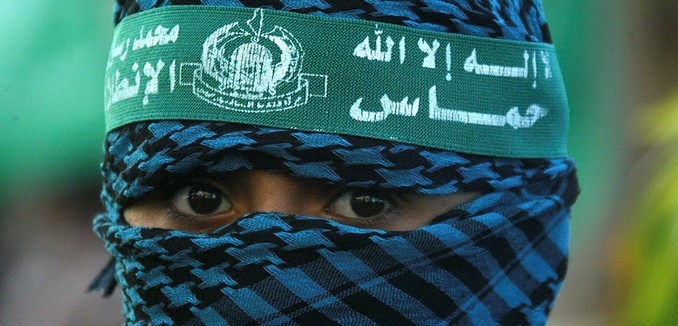The latest wave of terror in Israel may not be conducted by “lone wolves,” as is commonly believed, but guided by the hidden hand of Hamas, a leading terror researcher has reported.
Shaul Bartal of the Begin-Sadat Center for Strategic Studies wrote that obscuring the genesis and motivations of such attacks is a common Hamas tactic. The Iran-backed terror organization is “aware of the many advantages and the protection that deception and obscuration provides its operatives, their families and the organization’s institutions,” he wrote. “The Sunni organization uses the concept of concealment (‘taqiyyah’) which is more common in Shiite Islam, in order to make political and propaganda gains, mostly in order to change its image as a terror organization and present itself to the world as a legitimate organization.”
While Bartal acknowledged that “lone wolf” terrorists carry out their attacks “without any proven connection or direct order from the organization they belong to,” he found connections to Hamas in many cases.
The idea of taking a knife from home and using it to attack Israeli was laid out in a book-length Hamas document from the First Intifada era, “The Efforts of the Islamic Resistance Movement (Hamas) in the Palestinian Intifada 1987-1994.” The document, which is available on Hamas’ website, includes instructions on how to carry out attacks that largely have been followed by attackers in the past year. “This system of operations would ensure that the Shin Bet and Israeli security services will not be monitor the attacker, expect him, or predict anything that would allow them to foil the attack,” it says. It goes on to suggest that “The attacker should yell ‘Allahu Akbar’ (God is great) before, during, and after the stabbing, while finding creative ways to achieve that objective. The daring execution, by using the element of surprise, will confuse the enemy.”
Bartal also noted that “lone wolves” often have family ties to other terror organizations, increasing the possibility of attackers receiving external guidance. For example, Israa Jaabis, who drove her booby-trapped car into a checkpoint near Ma’aleh Adumim last October, is a cousin of a terrorist who killed one man and injured several more when he ran an excavator into a crowd in Jerusalem in August 2014. The sophistication of the explosive device in Jaabis’ car raised questions as to whether she was capable of devising such a device on her own.
Aspects of last Tuesday’s terror attacks—in which an American student was killed and eleven more people wounded in a stabbing attack in Jaffa, two policemen in Jerusalem were shot in Jerusalem, and one more wounded in a stabbing in Petah Tikva—also suggest some level of coordination with Hamas. The attacks took place on the 13-year anniversary of the day Israel assassinated Dr. Ibrahim al-Makhadmeh, one of the leaders and chief ideologues of Hamas. In a speech shortly after the attacks, Hamas leader Ismail Haniyeh not only praised the terrorists for helping the Palestinian struggle, but also paid tribute to al-Makhadmeh. The Jaffa attacker showed his allegiance to Hamas on his Facebook page, and the 17-year-old Petah Tikva stabber came from a family with a long affiliation with Hamas, Ynet reported.
While a military intelligence officer questioned Bartal’s findings, telling Ynet that Hamas often takes credit for attacks carried out by unaffiliated terrorists, a defense official told the news website that that there was something to Bartal’s findings. While Hamas is known to sometimes “adopt the terrorists after the fact,” there are often unanswered questions after attacks occur that could be explained by broader coordination. For example, the teenagers who murdered an IDF sergeant in his home last month traveled to Shaar Binyamin, rather than attacking a nearer community. They also penetrated two security perimeters and likely avoided being caught by metal detectors by concealing their knives in plastic. “They were 14 and 15—who taught them to do that?” He asked. “These questions also affect other cases. And this is not the lone example that requires new thinking. By the way, to my knowledge, there are those in the Shin Bet and the IDF who understand that there are many cases like this.”
[Photo: Abed Rahim Khatib / Flash 90 ]




